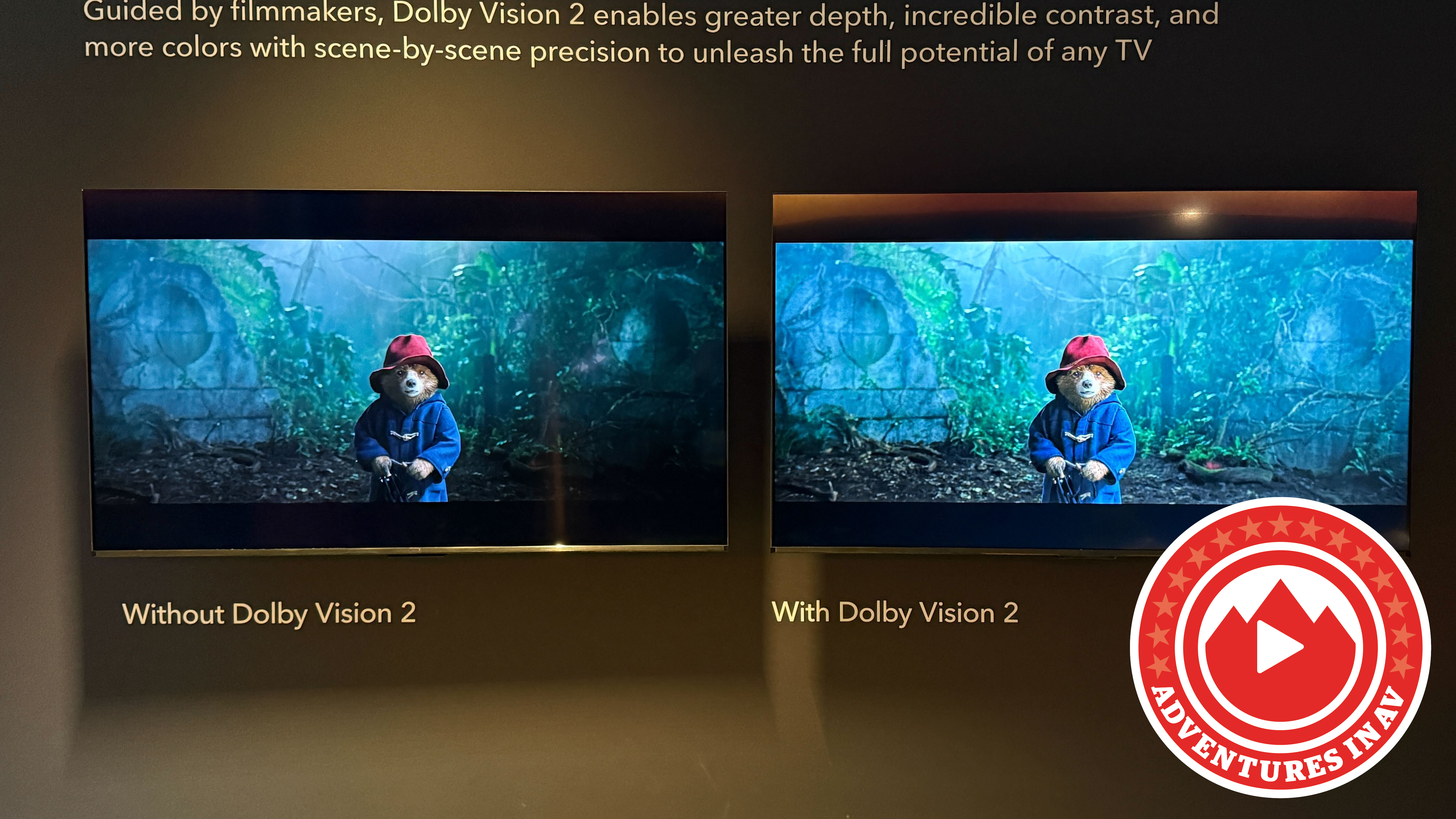Best waterproof speakers 2026: all types tested for every budget
Splashproof sound for poolside parties and rain-beaten rambling
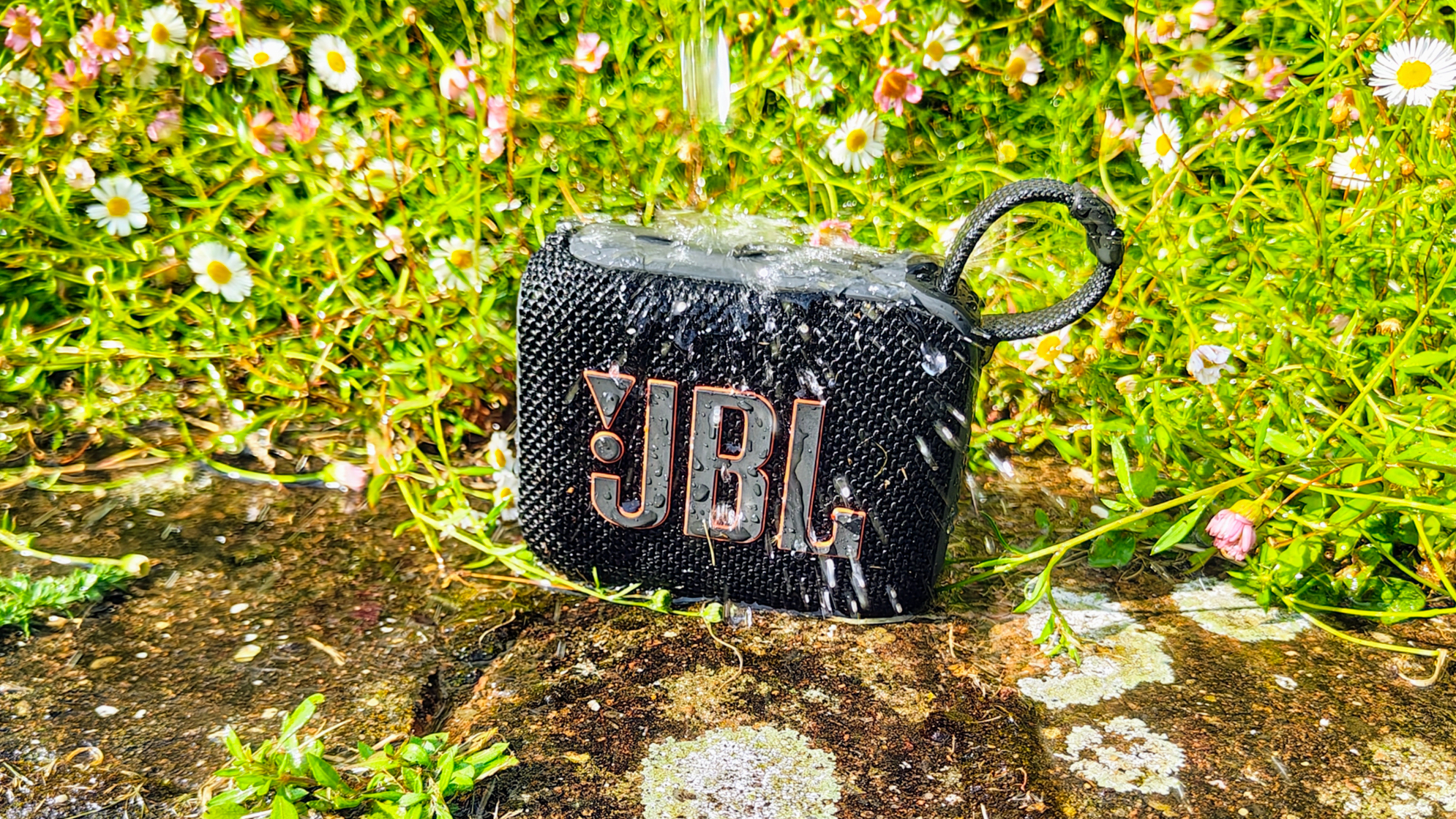
Generally, electronics and water don't mix, especially if a product's IP rating isn't up to scratch, but waterproof speakers built different. If you're desperate to take your music outdoors, you need a speaker that's made to withstand the elements.
The best waterproof models are built to withstand being splashed or sometimes submerged in water for several minutes without malfunction, while some will happily float like ducks.
That said, it's not an experiment we'd recommend unless you're sure of your hardware's integrity, especially if you don't want to end up with a broken speaker and a pond full of dead fish.
If you need a great-sounding, hardy portable Bluetooth speaker that won't break down at the mere sight of water or dust, this is the list for you.
We're expecting 2026 to be a big year for waterproof Bluetooth speakers. We'd think that JBL will have a few more tricks up its sleeves, whereas the likes of Sony, LG, Tribit and others are seeking to dethrone the US brand from its position as the biggest dog on the block.
We've tested every speaker in this list, both in our test rooms and on the go, exposing them to the elements so that you can be confident your purchase will serve you well the next time you head out.
Find out more about our testing process here or keep scrolling to see our pick of the best waterproof speakers available.
January 19th: No new entries, but we've ensured all of the information below is up-to-date.

I'm a senior staff writer who has listened to and reviewed dozens of products - from Bluetooth speakers to wireless headphones - during my time at What Hi-Fi?. A lover of the great outdoors, there's nothing I like more than picking up a portable speaker and heading on a long run, a hockey field or just a rainy garden to test its waterproofing credentials. When it comes to choosing the best waterproof speakers, I focus on the IPXX rating (i.e. how much water it will withstand), the durability of the build and finish, battery life, as well as the all-important sound quality for the price.
Best waterproof speaker overall
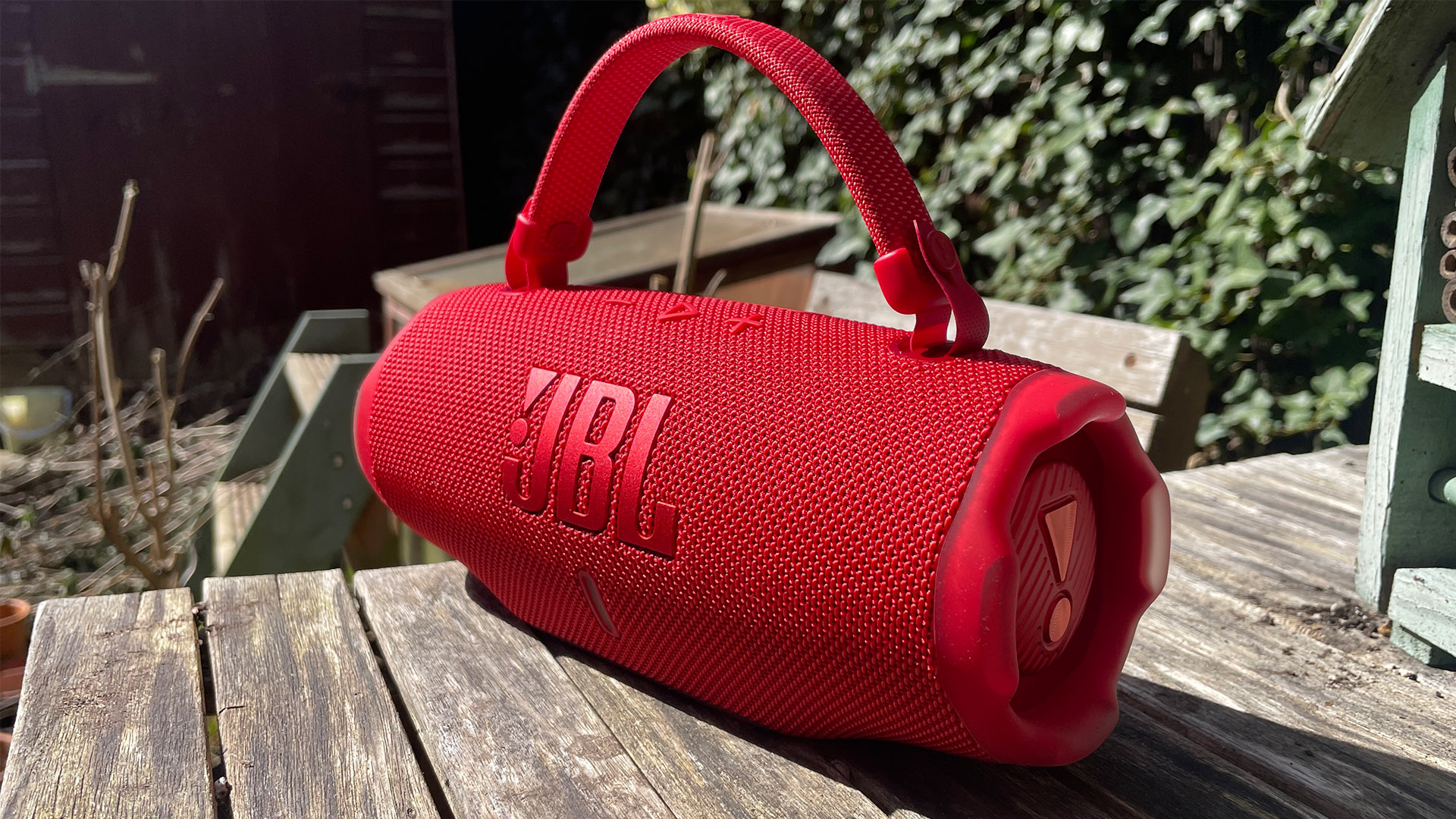
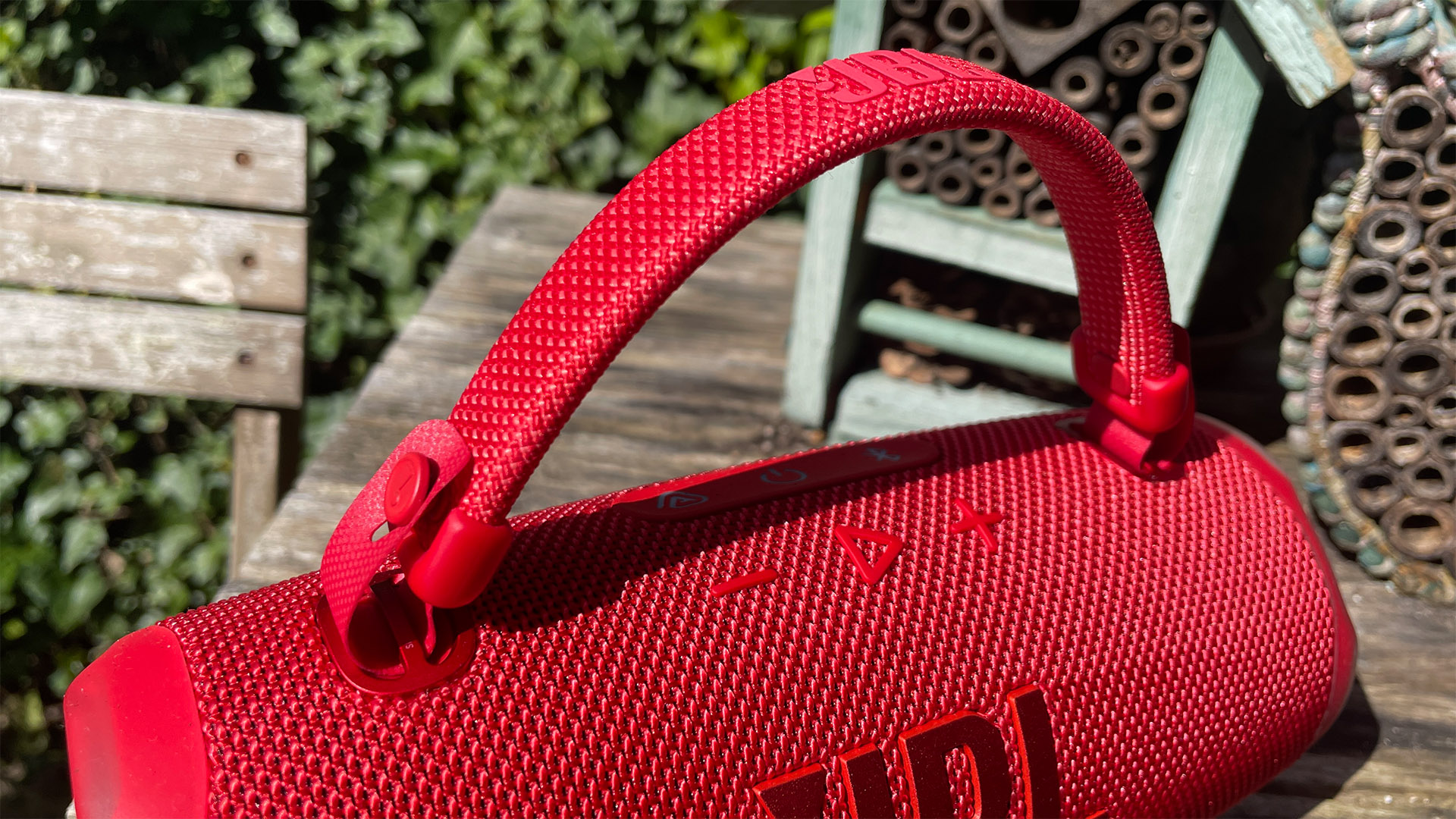
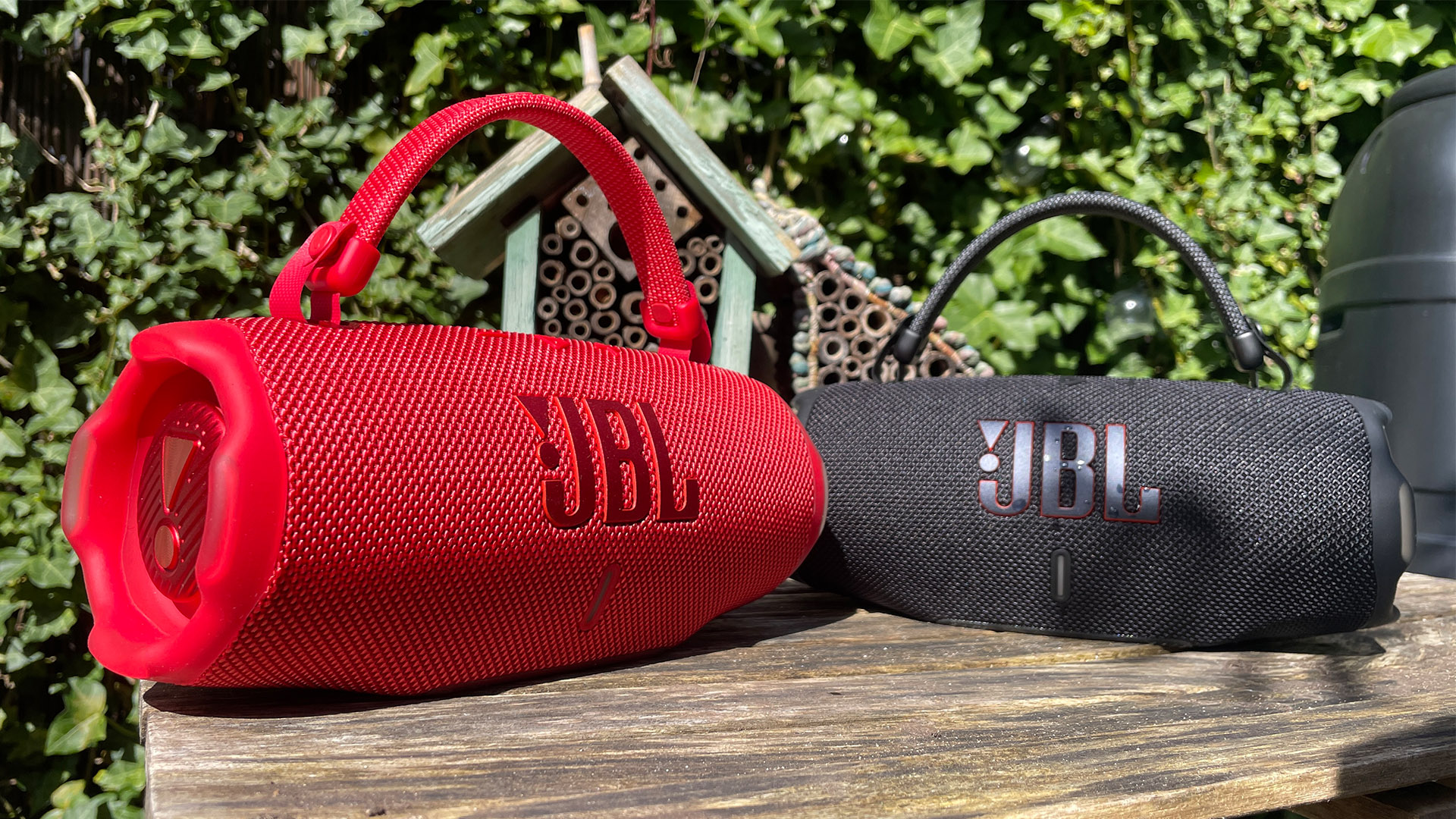
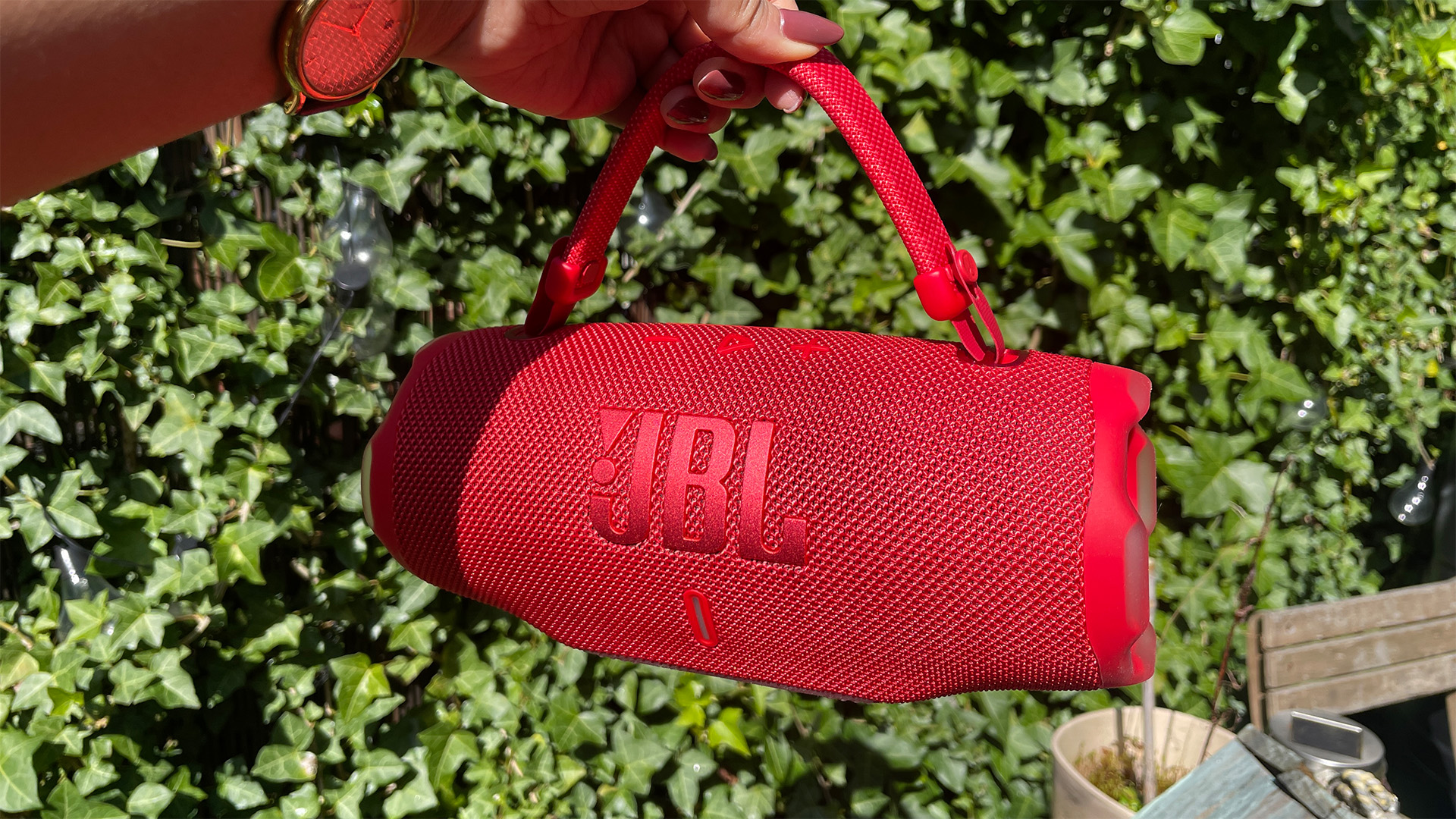
Specifications
Reasons to buy
Reasons to avoid
The JBL Charge 5 remains one of the most enduringly impressive Bluetooth speakers we've ever tested. After multiple What Hi-Fi? Award wins, JBL's bottle-shaped speaker is still available, but it's time to accept that it's been succeeded by a sixth-generation model in the shape of the JBL Charge 6.
Happily, the Charge 6 is ready to take up the mantle. If you want a speaker to battle the worst of the weather, it's now even more waterproof, dustproof and drop-proof than its predecessor, with an IP68 rating improving on the Charge 5’s IP67 certificate alongside beefier bumper guards at either end of the speaker
Within, the Charge 6 features a 20m tweeter and a newly developed woofer that strives for deeper and more powerful bass than the old model. Algorithm-led ‘AI Sound Boost’ analyses sound in real time to optimise its output and ensure that a more powerful and exciting but less distorted signature is produced no matter where you are.
It's paid off. To quote from our review: "The Charge 6 certainly sounds more powerful, but that muscle and authority are heard throughout the frequency range, not just in the lower end. The sound is clearer and more detailed than before, with vocals given extra solidity and textural depth; the highs soar with punch but clarity".
JBL made a concerted effort to make its latest generation of speakers as cutting-edge and feature-heavy as possible, packing its newer models with Auracast audio sharing and 24-bit/96kHz lossless audio via USB-C.
On top of those handy boons, the Charge 6 also offers 24 hours of juice plus four extra with Playtime Boost, as well as doubling up as a powerbank for your smartphone or portable device.
Waterproof and future-proof, the Charge 6 earns its five-star rating at a stroll.
Read our full JBL Charge 6 review
Best budget waterproof speaker

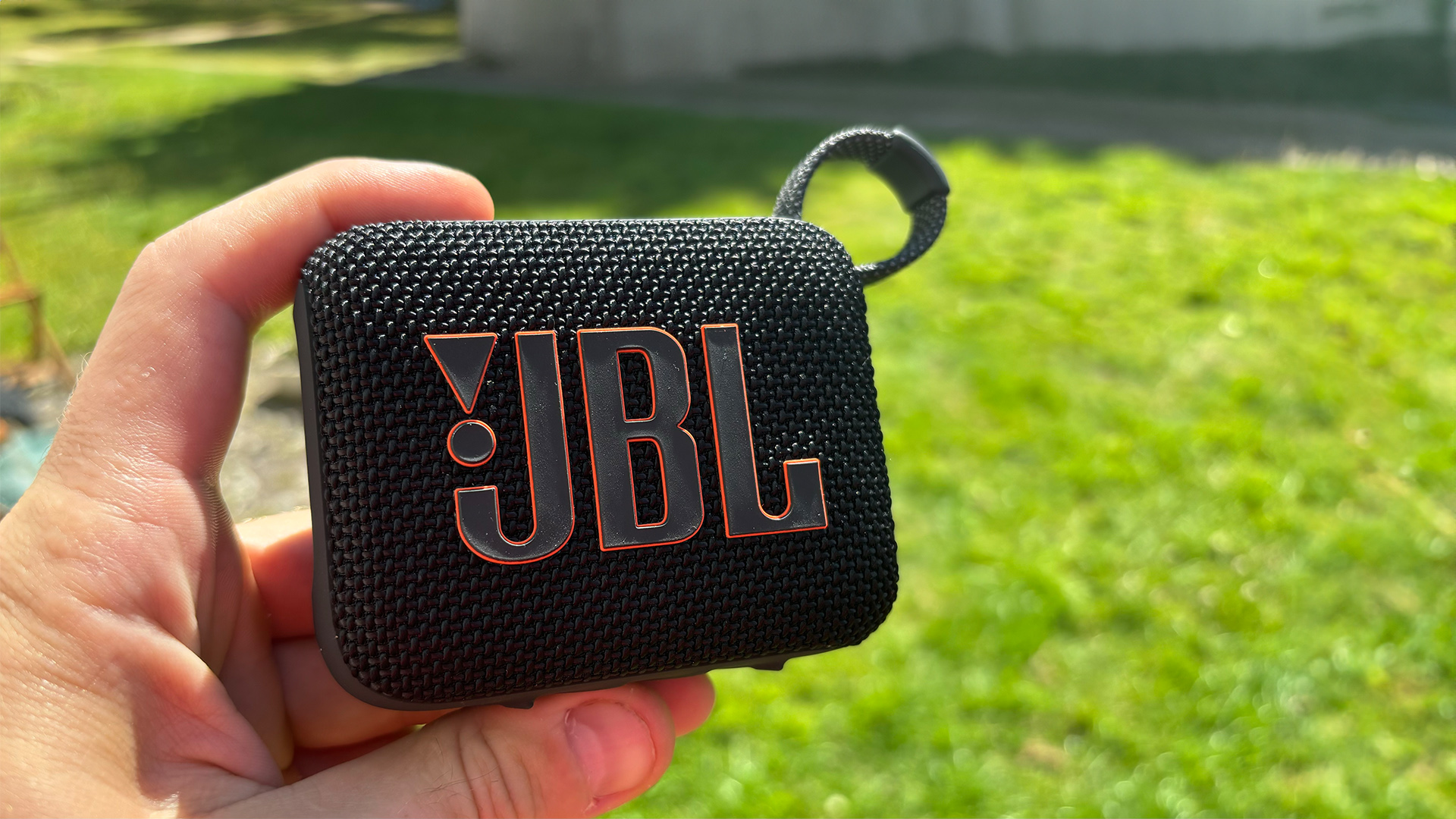
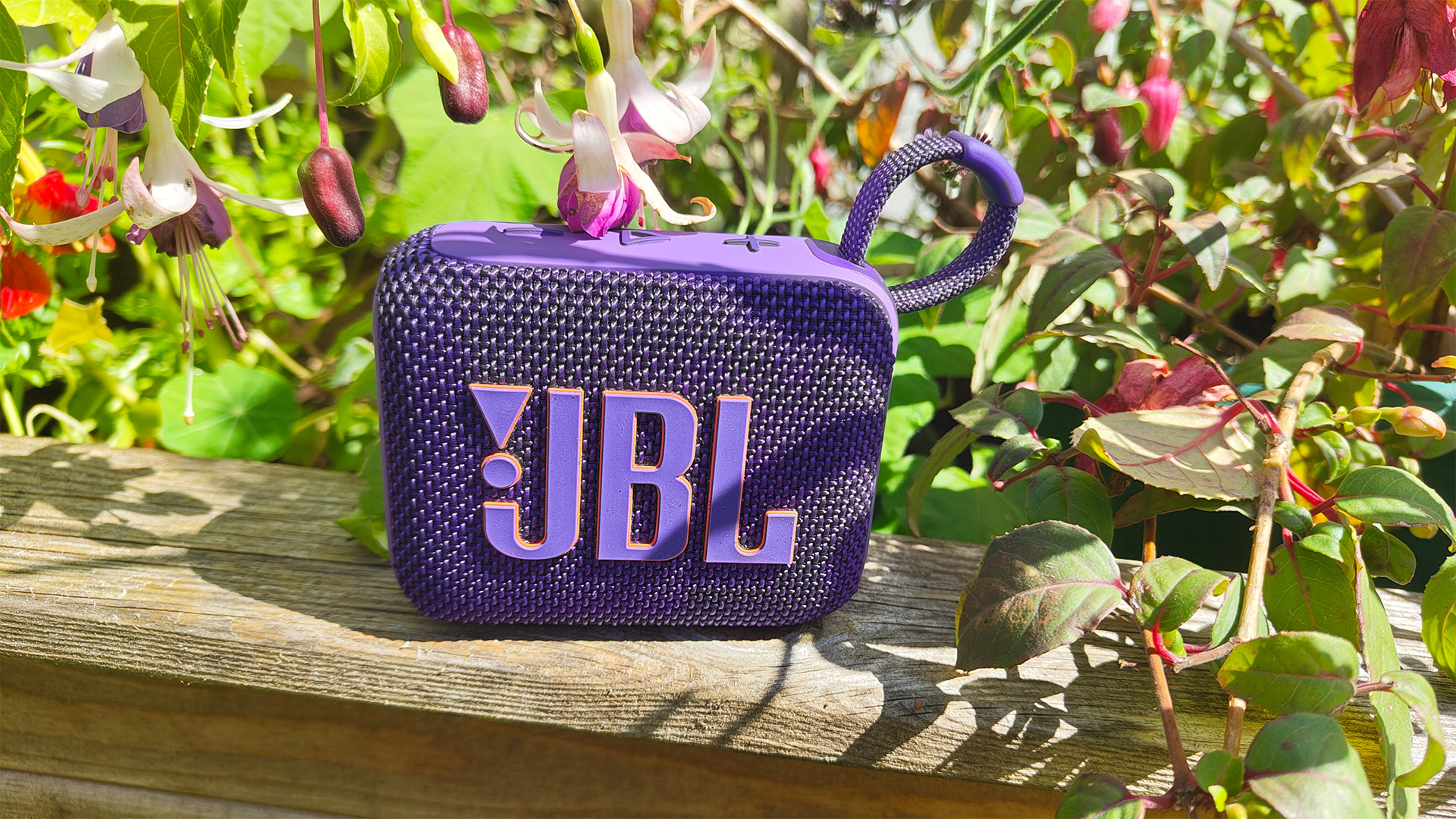


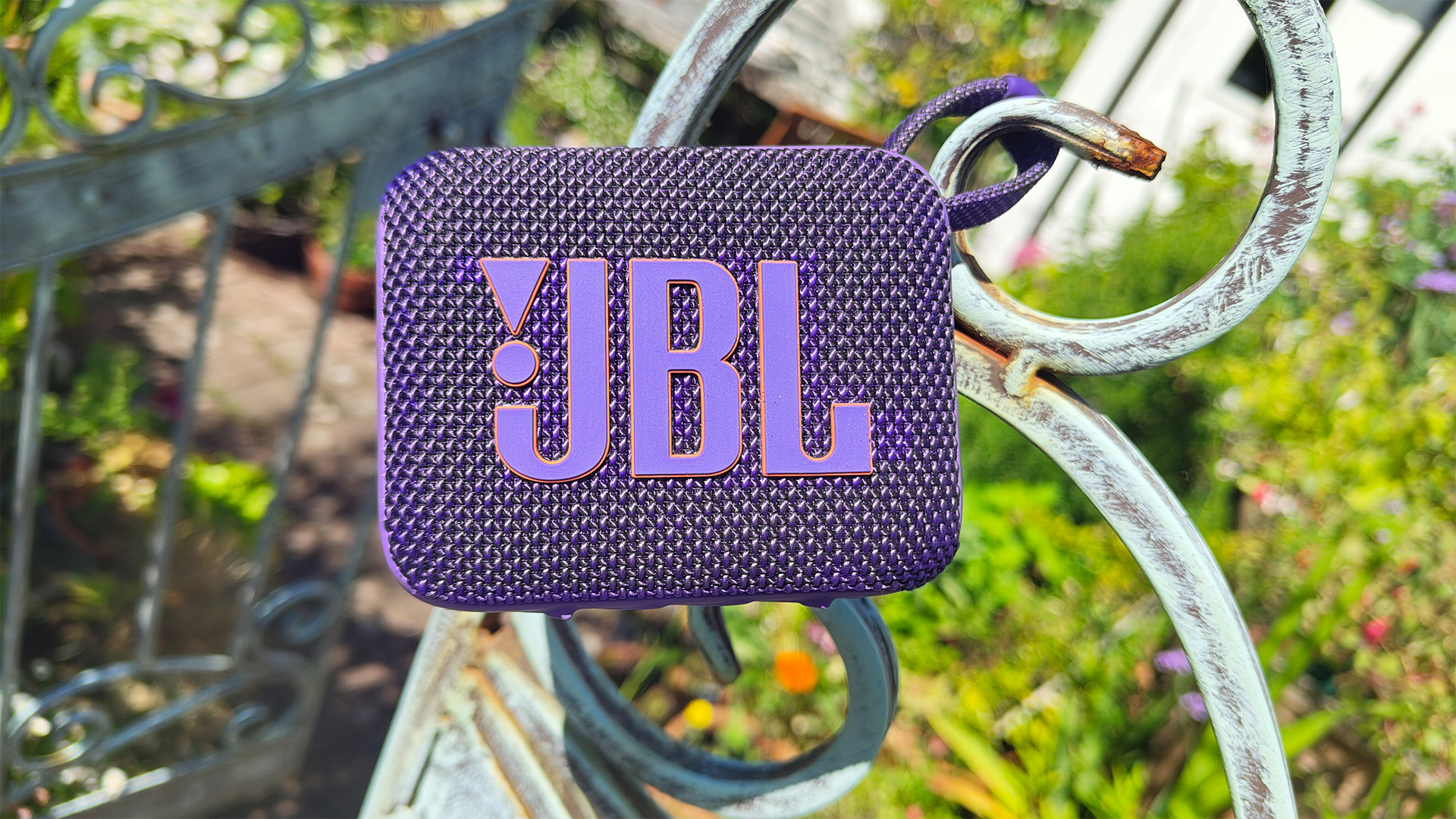
Specifications
Reasons to buy
Reasons to avoid
The JBL Go 4 is small and cute yet remarkably tough and tenacious. Sporting the same form and dimensions as, say, a chunky deck of cards or your standard bar of soap, the Go 4 has been designed for portability and durability – the sort of thing you can stuff into the bottom of a kit bag or even ram inside an accommodating back pocket.
If you need something that offers more wallop and musicality than your phone's measly in-built speakers, JBL's dinky waterproof speaker is your best bet.
In a straight competition with the best that your phone can handle, and quite a few larger Bluetooth competitors, the Go 4 is sonically supreme.
It doesn't have the open, mature presentation of the crowd-pleasing Tribit Stormbox Micro 2 above, but we're still so impressed by how the JBL's taut bass, restrained trebles and smooth mids combine to craft a marvellously coherent sonic picture.
Textures are revealed with clarity and character, but there's body and power to the music to which we're treated. Again, that's something you rarely see from units this small.
You also rarely see such impressive spec sheets and feature lists. We weren't so keen on the outgoing Go 3's battery life frustratingly paltry five hours, but the fourth-gen sequel bumps those numbers up to seven hours as standard, plus an extra two with Playtime Boost activated.
Auracast lets you pair two Go 4 speakers together in stereo or hook up multiple compatible JBL units, helping to future-proof the speaker as newer JBLs will likely be compatible with the current model. You even get app support, with a five-band customisable equaliser for getting your Go 4 sounding just how you like it.
For this price, there's nothing better than the JBL Go 4.
Read our full JBL Go 4 review
- Buying on a budget? Check out our list of the best Bluetooth speakers under $100
Best portable waterproof speaker

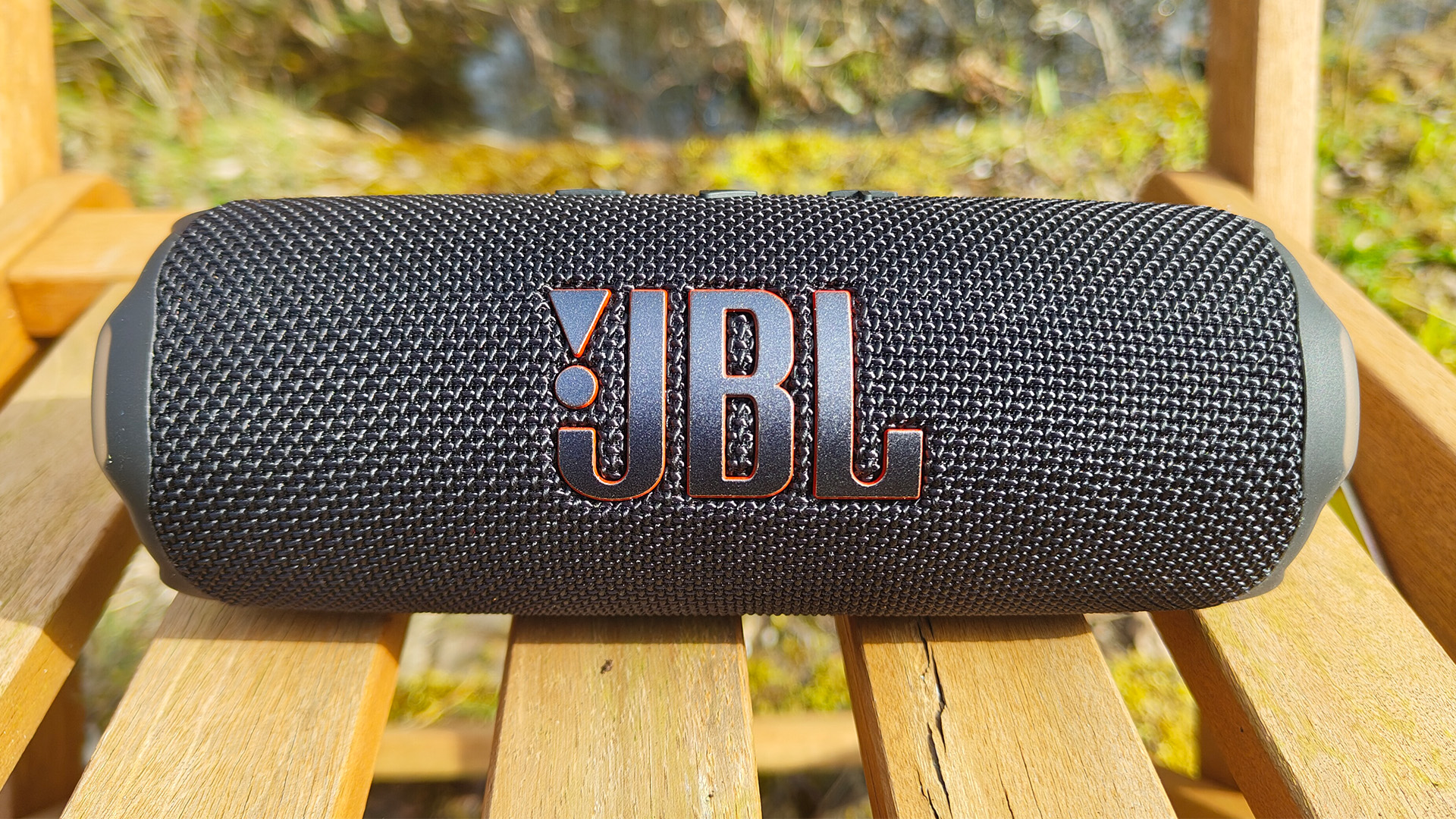


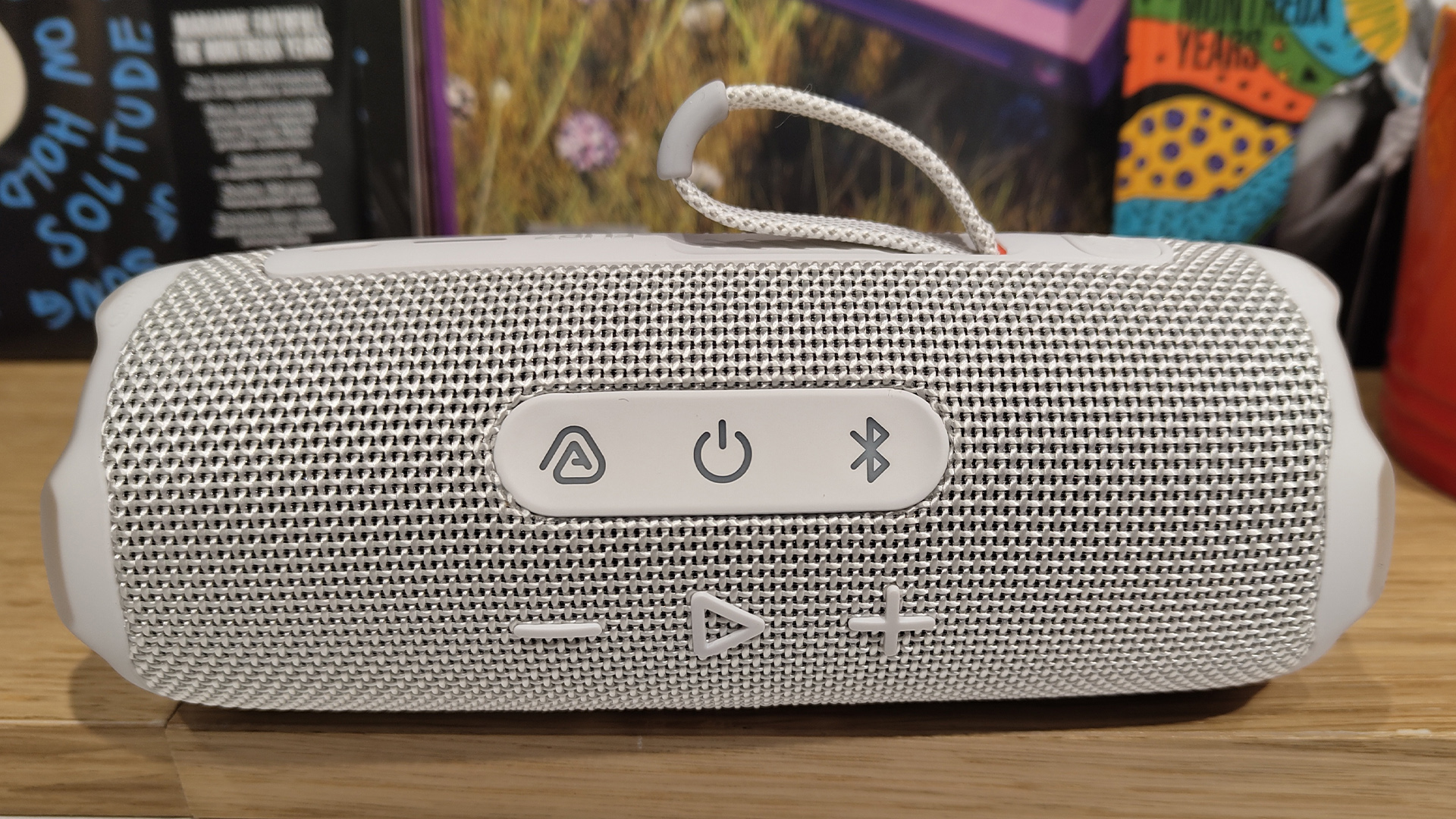

Specifications
Reasons to buy
Reasons to avoid
The older Flip 7 boasted a still-impressive IP67 water and dustproof rating, but JBL has upped the ante by bestowing a mighty IP68 certificate upon this latest iteration of the Flip line.
Anyone who finds the size or price of the Charge 6 above a little too much should consider the five-star JBL Flip 7. Smaller, slimmer and less expensive than the very capable Charge, the Flip 7 still offers a great deal of what you'd want in a portable Bluetooth companion.
Ditching the built-in adjustable carry loop of its predecessor, the seventh-gen speaker offers a choice of either a fabric finger loop or a carabiner hook for clipping the speakers onto bags, branches or anything else that springs to mind.
Like the Charge 6, the Flip 7 is heavy on features. The seventh-gen Flip offers Auracast functionality, the clever sharing technology which lets you pair two Flip 7s together in stereo or hook up multiple units via the JBL Portable app.
The Flip will grant you 14 hours on a single charge plus an extra two with Playtime Boost. The Flip 7 also features wired listening for the first time, supporting up to 24-bit/96kHz lossless audio playback via USB-C, meaning that it should sound its absolute best when using a physical tie.
From an audio perspective, this has to be the best Flip we've heard. It's bassier than before, with a smoother, more refined profile than the more hard-edged Flip 6 can manage. Detail levels are better than ever, while the dynamic peaks and troughs of your music are revealed with greater scope and illumination.
Across the board, this is a big step up for the Flip. A true waterproof wonder.
Read our full JBL Flip 7 review
Best mid-price waterproof speaker

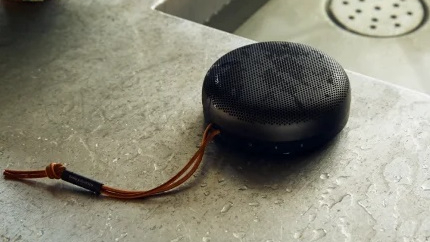

Specifications
Reasons to buy
Reasons to avoid
There's a third-generation Beosound A1 out – the logically-named B&O Beosound A1 (3rd Gen) – but we're still recommending the older model thanks to its far lower price, Alexa capabilities and excellent performance.
The new boy is great, and you'll find it in our also consider section, but its lofty price tag (£299 / $349 / AU$639may be a sticking point for many would-be buyers.
There's nothing better than seeing style and substance come together, and that's exactly what you're getting with the rather wonderful Bang & Olufsen Beosound A1 (2nd Gen). It looks the part, it sounds the part, and by Jove, it's built to last, too.
Yes, most of B&O's range looks more at home in an art gallery than stuck on the side of Skegness Beach, meaning you'd be forgiven for thinking that a go-anywhere bit of Bang tech would be a little like having a portable version of Rodin's The Thinker stuffed in your backpack.
Happily, the Beosound A1 is tougher than its delicate looks would suggest, and the A1's IP67 rating should mean that it's happy being subjected to a 30-minute swim up to a metre deep.
Quoted battery life is also a solid 18 hours at normal listening volume, or up to 48 hours at a more conservative level, so running out of juice halfway through your camping trip shouldn't be too much of a concern.
The A1 supports Qualcomm’s aptX Adaptive Bluetooth 5.1 codec as well as Alexa voice control, which is a bonus. Sound performance is authoritative and expansive with a weighty, pleasing bass presentation, and there's even a convenient strap for ease of transport.
It's expensive at full price, but if you have money to spend, the Beosound A1 is a rather remarkable all-rounder. Grab one for a decent discount (they often drop to around £152 during sales) and you'll have bagged a bargain.
Read our full Bang & Olufsen Beosound A1 (2nd Gen) review

If you're thinking of getting a JBL Go 4, Xtreme 4 or any more recent JBL speaker, you may be wondering about Auracast. We've written a full explainer on what Auracast is and when it will be fully available, but the shortened version is that it's a Bluetooth audio-sharing technology feature that allows a source device, such as a phone or TV, to broadcast multiple audio streams to an unlimited number of receivers such as earbuds or Bluetooth speakers. What's exciting is that Auracast is near-limitless and not ecosystem-specific, so you could connect endless JBL Go 4s, for instance, or many JBLs to multiple other brands of wireless speakers or wireless earbuds.
Best premium waterproof speaker
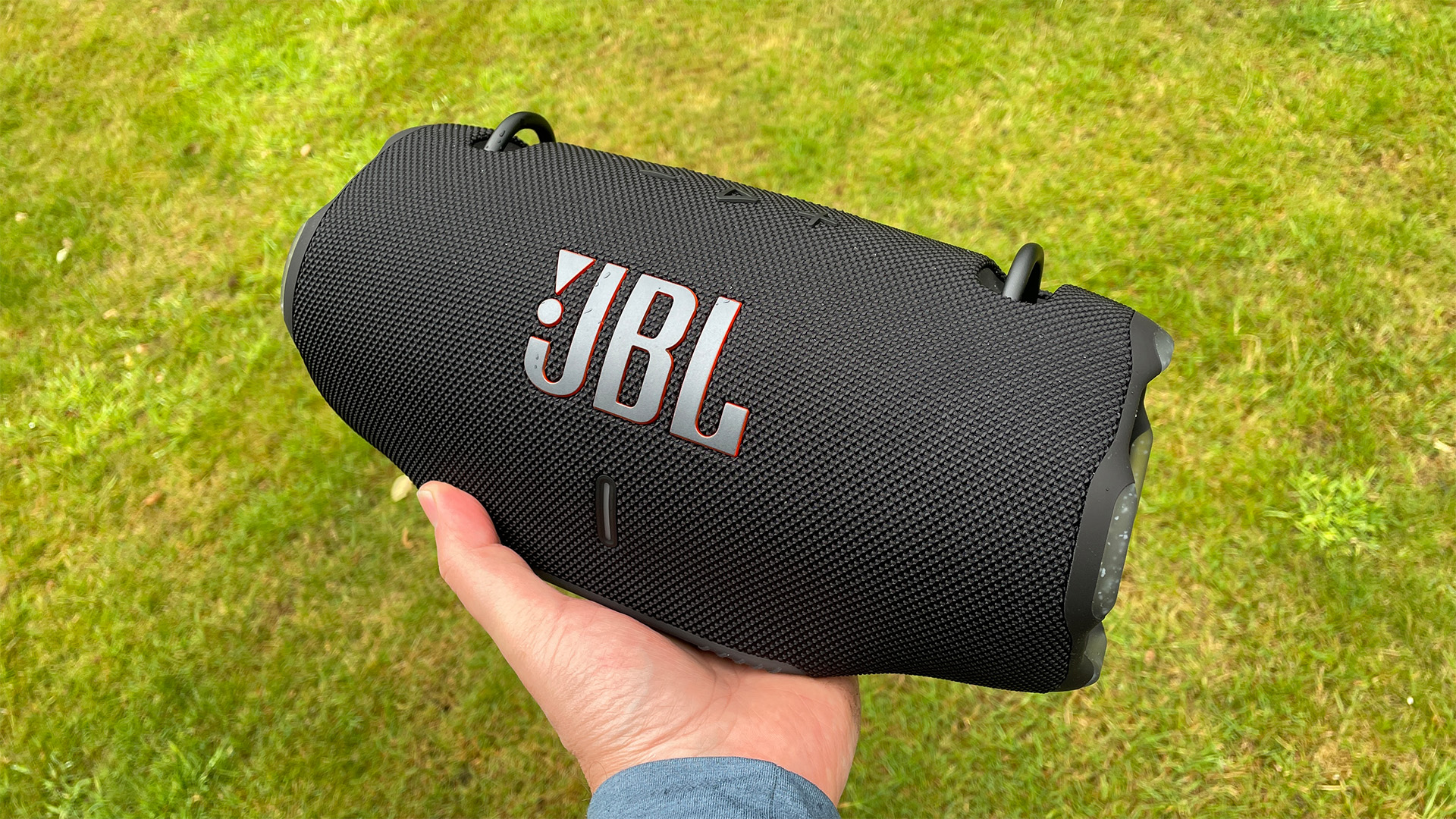
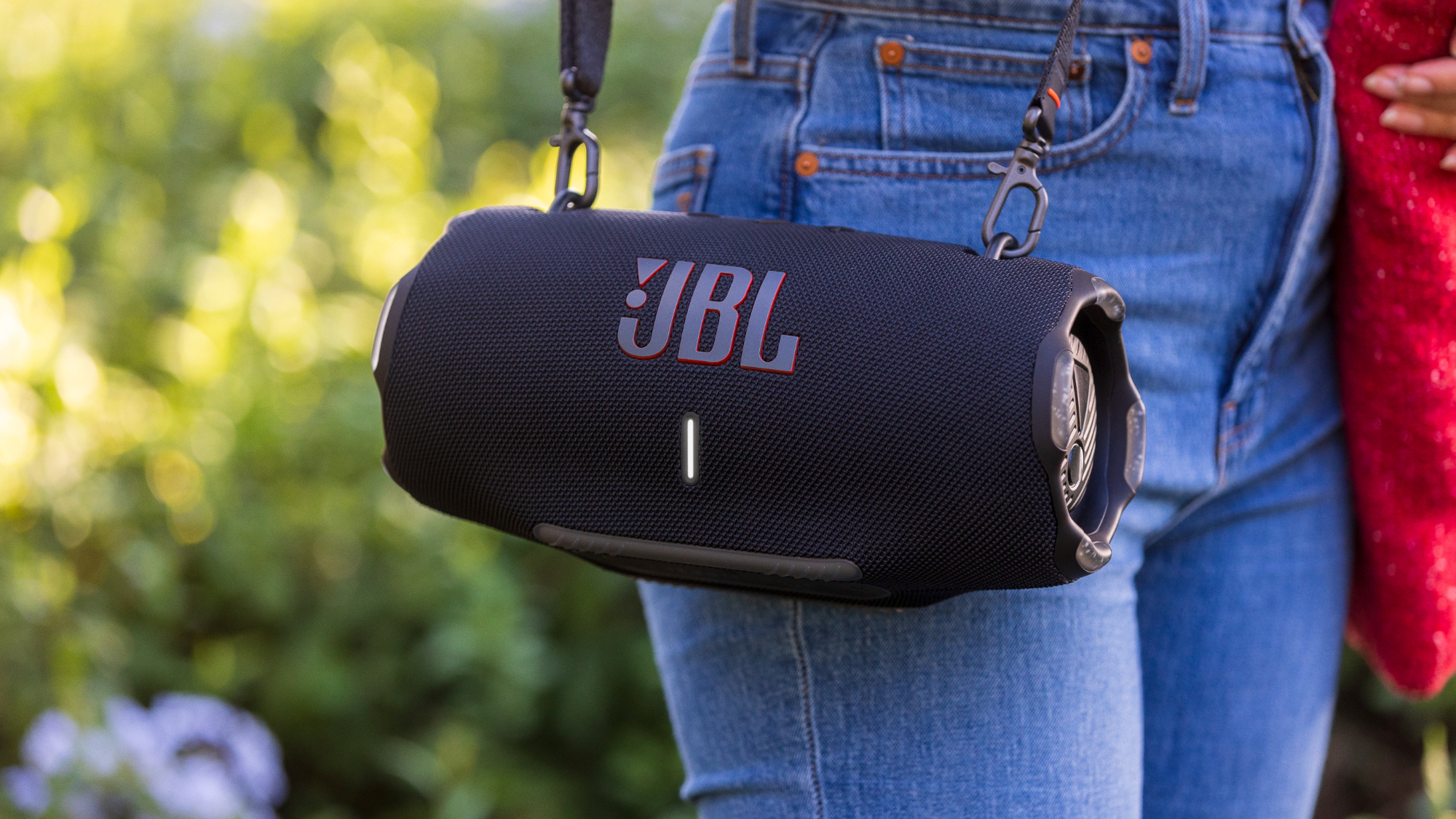
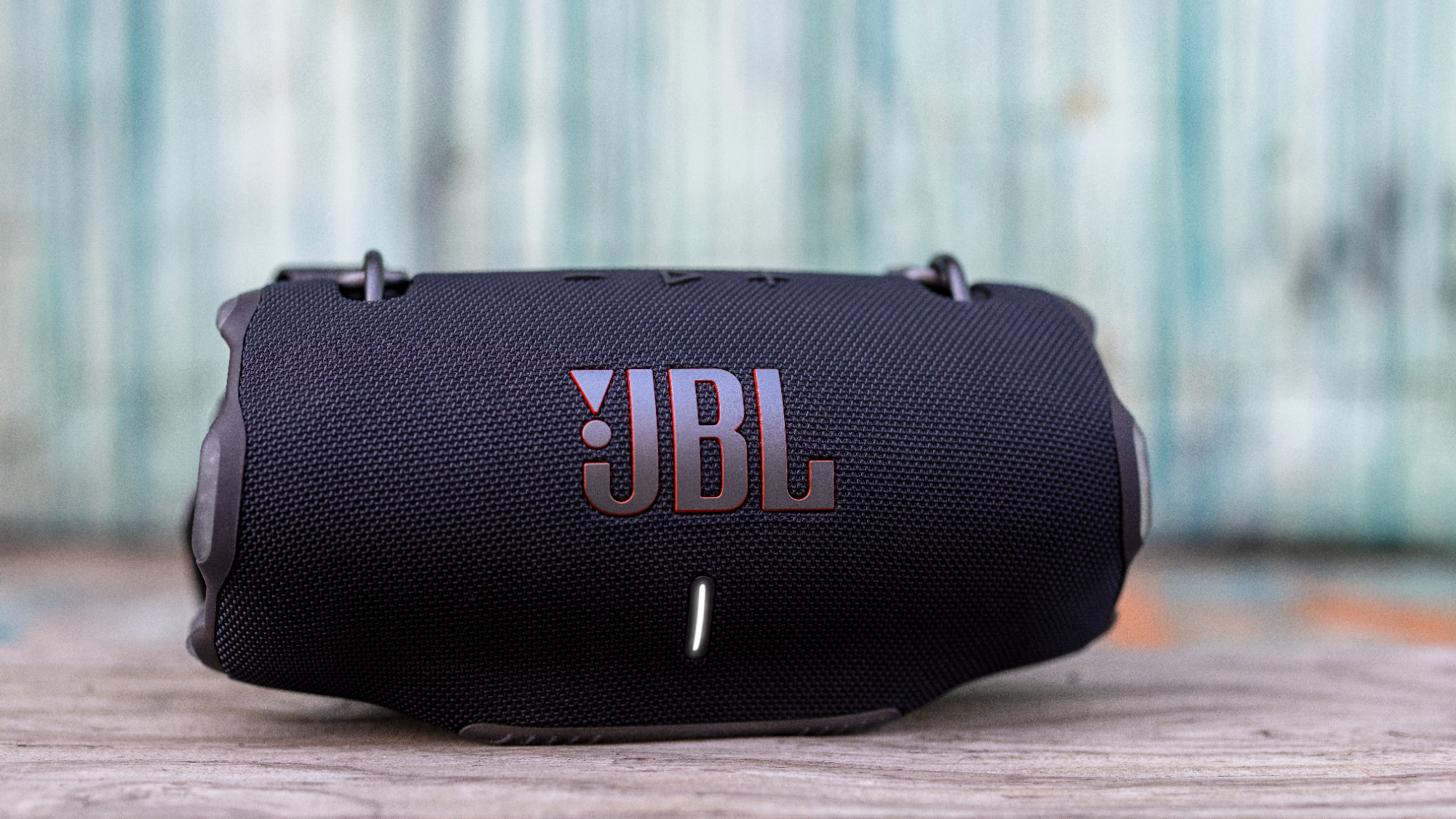
Specifications
Reasons to buy
Reasons to avoid
To tackle the elements with the best sound possible, you can't go wrong with the Award-winning JBL Xtreme 4. The Bose SoundLink Max is an outstanding candidate at this price, but the all-around credentials of JBL's latest Xtreme make it almost impossible not to recommend.
Simply put, the Xtreme 4 is the Xtreme 3 but better. The design is essentially the same as the older model, albeit with some small tweaks. The speaker's button layout is now a block of six rather than a linear configuration, while a tweaked base with two strips of silicon feet grants more stability and grip to the ensemble.
Those changes aside, it's the same robust, IP67-rated build as the Xtreme 3, and that's no bad thing; this design served JBL well in the past.
The Xtreme 4's driver configuration follows the previous model's, with two 70mm woofers and two 20mm tweeters behind the grille and those pulsating radiators housed at either end. Sonically, things have been taken up a notch, offering up the best audio performance we've heard at this price to make one of the best-sounding Bluetooth speakers of 2024.
As our review praised: "For such a chunky speaker it produces a fantastically refined sound. It produces a wonderfully clear and consistent sound across tracks: low frequencies are poised and punchy but don’t lack weight, (whereas) highs are crisp enough so they don’t feel rolled off".
New features enhance the Xtreme 4's overall credentials. Auracast lets users pair two Xtreme 4 speakers together in stereo or connect multiple compatible JBLs in a chain. It also gives the new model some element of future-proofing should features that require the tech emerge in the coming months.
The JBL app is as user-friendly and comprehensive as ever, whereas 24 hours is a big improvement on the 15 hours of the previous model. Like the Charge 5, the Xtreme 4 will charge up connected devices via USB-C, and there's even a replaceable battery if the built-in unit gives up the ghost.
All in all, an outstanding outdoor speaker from JBL. If you've got the cash to stretch further up the price ladder, the Xtreme 4 is the speaker to go for.
Read our full JBL Xtreme 4 review
Also consider
JBL Flip 6: Still one of our favourite portable models around and a mainstay on our list of the best Bluetooth speakers overall, the Flip 6 is unmatched at its price for its musicality, authority and sense of fun. It's IP67 rated, supremely robust and ideal for granting super sound at a reasonable cost.
Bose SoundLink Max: The SoundLink Max is excellent. It's so good, in fact, that it could easily have made it onto the main list had it not been for the outstanding JBL Xtreme 4. Still, for giving you a rugged, ergonomic design that fires out tunes with genuine spark and dynamism, the burly Max is a five-star delight.
Bang & Olufsen Beosound A1 (3rd Gen): It's a lot of money to pay for a waterproof speaker, and possibly isn't the sort of thing you'd want to get damaged in the great wide world. Still, the IP67-rated B&O is classy, cool and crafted with genuine care, making it a product you want more than one you really need.
Beats Pill: Beats is finding its groove again. The Beats Pill offers up a clear, clean sound and some decidedly nice bass, not to mention a travel-friendly design and outstanding IP67 rating. A solid choice for long-term Beats fans.
Bose SoundLink Plus: The SoundLink Plus won't struggle with the elements thanks to its impressive IP67 water and dustproof certification. It's easy to recommend sound-wise, with a punchy, bold delivery that belies its reasonably small size.
Tribit Stormbox Micro 2: We've been admirers of the palm-sized Tribit for quite some time now. While it isn't the sexiest speaker in the world, its surprisingly full, involving sound and excellent durability has won many hearts, including our own.
Sonos Move 2: If you love Sonos and want something bigger than the Roam, try the Move 2. It's heftier than the Roam, but the Move 2 is made semi-portable thanks to its Bluetooth connectivity, built-in rear handle and solid build. That said, it's more the kind of speaker you'd take around the garden rather than much further afield.
Sony ULT Field 1: The ULT Field 1's flexibility and strong feature set make it an attractive option. The ULT boost button works well considering the size and general use case of the Field 1, while DSD sound diffusion, hands-free calling, stereo pairing and Android Fast Pair add to its credentials. It's IP67-rated too, meaning the Sony will handle most of what's thrown at it.
How to choose the best waterproof speaker for you
A good waterproof rating should be high on your checklist of things to consider when choosing a waterproof speaker. The most common rating used in consumer electronics is the IP (Ingress Protection) standard, with ratings written as "IP" followed by two numbers – the first represents dust resilience, the second represents water resistance.
Those models with a rating of IPX4, for instance, are only splashproof (the 'X' means the product wasn't tested for resilience against dust ingress.) But one of the most common specifications in newer models – in the speakers listed – is IP67, meaning that particular speaker is safe to immerse in water up to 1m deep for up to 30 minutes and it's dust-proof, too. For a full explanation of the IP ratings and what they mean, check out our IP ratings explainer.
While Bluetooth is pretty much a must for these portable designs, wi-fi connectivity is less important when it comes to a waterproof speaker. Still, it's a great addition if you'll be using your speaker at home too and want to integrate it with your smart home set-up (using Amazon Alexa, Siri or Google Assistant).
Decent battery life is also a key consideration – nothing spoils a long hike or away day like a flat battery. Whether you want a budget buy or can stretch to a much pricier and more capable model, there's bound to be something for you in our recommendations above.
How we test waterproof speakers
We review hundreds of products every year at What Hi-Fi?'s state-of-the-art testing facilities, including all kinds of Bluetooth speakers, and of course waterproof ones. We test all products that come through our doors as a team of experts with over a century of combined experience, ensuring no expert opinion ever goes unheard.
While we listen to all speakers in the test rooms, we also take waterproof speakers outside to test how durable they are against the rain, drizzle or even a dunk in the pool (or a sink or bath).
Every Bluetooth speaker is judged on a performance-per-pound basis, and we make sure to compare speakers with similarly-priced class leaders to help ensure we get a good sense of a speaker's performance and context in the market as well as help us settle on a final verdict score.
Outside of evaluating the audio performance of every waterproof speaker, we also test features like battery life, water resistance, Bluetooth connection strength, ease of use and set-up, among other things – including whether it's as rugged as it is claimed to be. It's important we get a full sense of both a product's practicality as well as its performance to gauge its overall value.
As a matter of course, there's no input from PR companies or sales teams when it comes to reviews, with What Hi-Fi? enjoying a sterling, decades-long reputation for delivering unbiased, honest feedback.
FAQ
How does a Bluetooth speaker work?
Bluetooth is a low-powered, short-range and low-bandwidth streaming protocol for connecting devices wirelessly. Bluetooth uses radio waves; like wi-fi but at a different scale.
A Bluetooth speaker uses this short-range Bluetooth to connect to a Bluetooth-supporting source and accept data from it. Both the speaker and source device need compatible Bluetooth codecs to send such information between them – SBC and AAC are the standard ones. A wireless speaker works similarly but relies instead on a wi-fi network connection to accept audio data transmitted from its audio source.
Pairing a Bluetooth speaker and Bluetooth device is simple: put the speaker in 'pairing mode' (usually by pressing or holding a button), go into a device's Bluetooth settings, 'scan' for available speakers and then select your device when it appears.
What are IP ratings and how do they work?
If you want a completely comprehensive rundown of what IP ratings are, how they work and why they're important, our "IP ratings explained" page is your go-to guide.
If you want the abridged version, the IPXX system is essentially a simple method of classifying audio products depending on how resistant they are to their environment, broken down into physical particles (dust, sand etc.) and liquid particles, i.e. water and other fluids. The term "IP" stands for “Ingress Protection”, so how well a product can prevent the ingress of particles into its hardware.
The IPXX rating system thus informs consumers as to how waterproof and/or dustproof a given product is, with the first number denoting resistance to physical particles and the second denoting liquids (an X means untested or unrated), with 0 being the lowest and 9 the highest.
So, for example, an IP67 rating means a dust-tight speaker that can withstand full immersion for 30 minutes in water up to a meter deep.
Recent updates
- January 2026: No new entries, but we've ensured all of the information below is up-to-date.
- December 2025: We've made sure that this page is up-to-date for the start of 2026.
- October 2025: No new additions, just a copy refresh.
- August 2025: Added the Bose SoundLink Plus to our also consider section thanks to its positive review and IP67 certification.
- June 2025: We've added the B&O Beosound A1 (3rd Gen) to our also consider section.
- April 2025: We've added the JBL Flip 7 and Charge 6 to our list following a pair of five-star reviews.
- January 2025: We've updated our copy and made sure it's fresh and up-to-date for the start of 2025. Also removed outdated products that are no longer on the market.
- December 2024: We've labelled our What Hi-Fi? 2024 Award winners and given our copy a fresh update.
- October 2024: Moved the JBL Flip 6 to our also consider section and replaced it with the JBL Go 4 as the best portable waterproof speaker.
- August 2024: We've replaced the outgoing JBL Xtreme 3 with the new Xtreme 4 as our pick for the best premium outdoor speaker. We've also added the Bose SoundLink Max to our 'also consider' section.
- June 2024: Added new models to our also consider section and replaced single pictures with multi-image galleries.
- March 2024: Added FAQs and an "Also Consider" section to offer more alternative buying options for readers.
- November 2023: What Hi-Fi? Award winners labelled after the 2023 Awards Best Buys and Product of the Year announcements.
MORE:
See our best budget Bluetooth speakers list
Check out 28 of the best tracks for testing bass
IP ratings explained: how waterproof are your headphones?
The latest hi-fi, home cinema and tech news, reviews, buying advice and deals, direct to your inbox.

Harry McKerrell is a senior staff writer at What Hi-Fi?. During his time at the publication, he has written countless news stories alongside features, advice and reviews of products ranging from floorstanding speakers and music streamers to over-ear headphones, wireless earbuds and portable DACs. He has covered launches from hi-fi and consumer tech brands, and major industry events including IFA, High End Munich and, of course, the Bristol Hi-Fi Show. When not at work he can be found playing hockey, practising the piano or trying to pet strangers' dogs.
